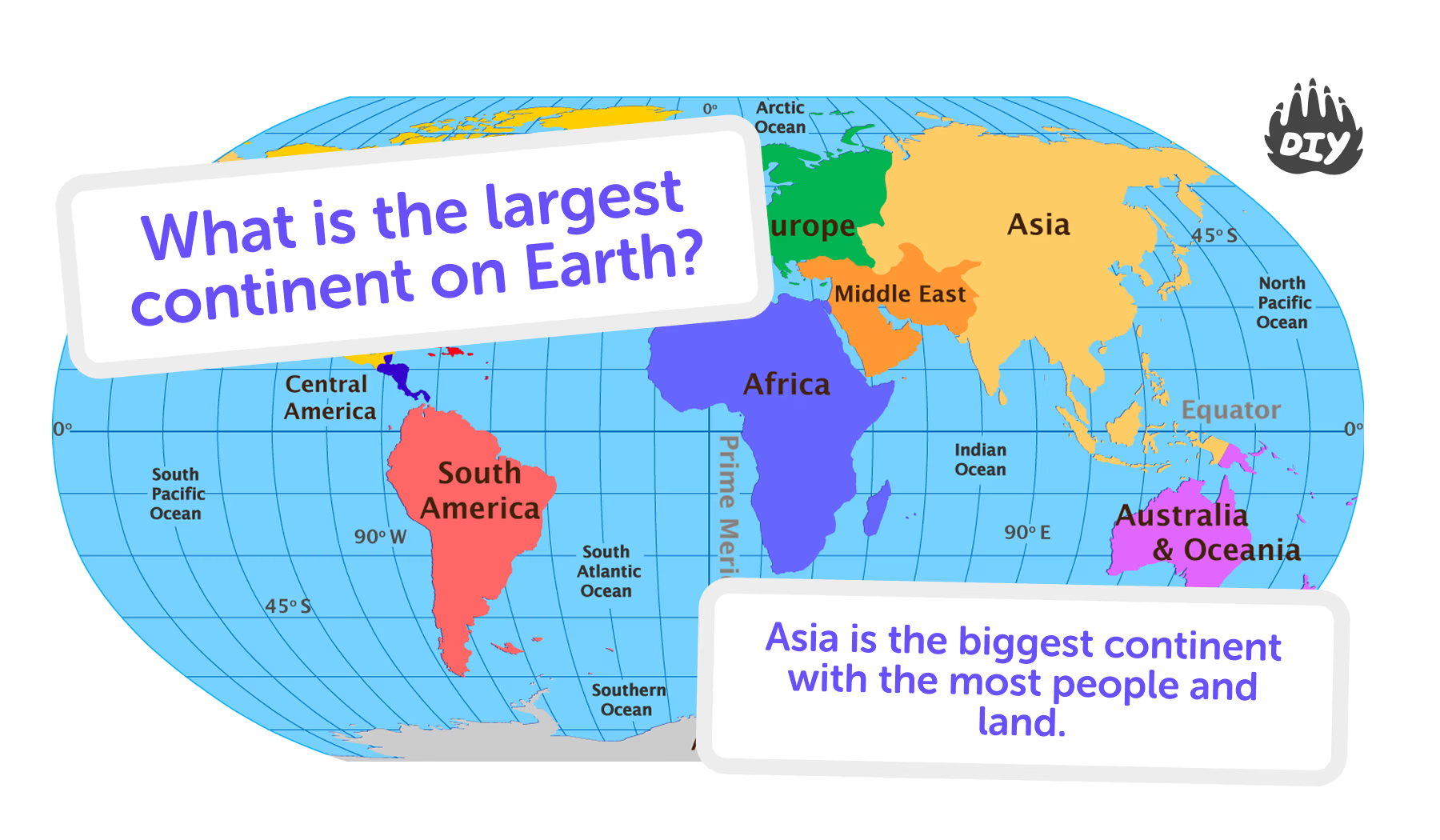When you look at a world map or spin a globe, you’ll notice land areas divided into continents. These are the “big neighborhoods” of the Earth, where countries, cultures, and landscapes cluster together.
Why Kids Learn About Continents
One of the most common geography questions kids get in school is: Which continent is the largest? The answer is Asia, but there’s more to know than just its size.
Learning about continents helps kids understand global geography, population, ecosystems, and history. And if homework questions feel tricky, the AI Homework Helper is the perfect tool to explain continents step by step.
Which Continent Is the Largest? Asia!
Covers about 17 million square miles (44 million square kilometers)
Holds around 4.7 billion people, more than half of the world’s population
Stretches from the Middle East to Japan, and from Russia down to Indonesia
That means Asia is not just big in land, it’s big in people, history, and culture.

Why Asia Is So Big and Diverse
Asia includes:
The highest mountain in the world: Mount Everest (29,032 feet / 8,849 meters).
The largest country by size: Russia (partly in Europe, mostly in Asia).
The most populous country is India, recently surpassing China.
Famous rivers like the Yangtze, Ganges, and Mekong.
Vast deserts like the Gobi and the Thar.
👉 Curious? Ask the DIY.org homework helper tool: “What are the five most famous landmarks in Asia?”
Comparing Continents: Who’s Biggest and Smallest?
Here’s how the continents stack up. Asia is almost twice the size of Africa and more than five times larger than Australia.
Rank | Continent | Area (million sq mi) |
|---|---|---|
1 | Asia | 17.0 |
2 | Africa | 11.7 |
3 | North America | 9.5 |
4 | South America | 6.9 |
5 | Antarctica | 5.4 |
6 | Europe | 3.9 |
7 | Australia (Oceania) | 3.3 |
Everyday Connections - how Asia affects everyone's life on earth
Technology: Most of your electronics are made in Asian countries.
Food: Rice, noodles, spices, and sushi all come from Asia.
Wildlife: Pandas, tigers, elephants, and snow leopards all live there.
Sports: Cricket in India, martial arts in East Asia, and soccer everywhere.
Fun Facts About Asia
Asia is home to the longest continuous wall: The Great Wall of China.
It has the coldest inhabited place on Earth: Oymyakon, Russia.
The world’s tallest building, Burj Khalifa in Dubai, is in Asia.
The Silk Road, an ancient trade route, connected Asia to Europe.
These facts turn homework into fun trivia kids can share with friends.
Tips for Parents Helping With Geography Homework
Start with a globe or map: Kids learn better with visuals.
Link it to culture: Show foods, music, or clothing from Asian countries.
Use comparisons: Asia is about as big as all of North America and South America combined.
Practice quizzes: Let the AI Homework Helper generate practice questions.
Largest Continent: Frequently Asked Questions
What continent is the largest by land area?
Asia, at about 17 million square miles.
Which continent has the most people?
Asia, with about 4.7 billion people.
What’s the smallest continent?
Australia (sometimes called Oceania).
Why is Asia so important?
It has the most people, the fastest-growing economies, and a major cultural influence.
Does Asia include the Middle East?
Yes, countries like Saudi Arabia, Turkey, and Iran are part of Asia.
Is Russia in Asia or Europe?
Both. about 75% of Russia is in Asia, the rest in Europe.
The Bottom Line
Asia is the world’s largest continent and one of the most diverse. From snowy mountains to deserts, bustling cities to tiny villages, it’s a place of endless discovery.
For kids, learning about Asia isn’t just about geography facts, it’s about connecting to cultures, people, and places around the world. And with the DIY.org homework helper tool, kids can keep exploring continents safely, with interactive guidance and practice quizzes.


